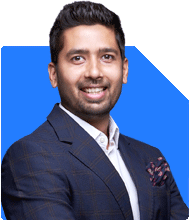Hi sir, greetings. Am 46 years old and have recently got a lumpsum amount of around 15 lakhs and want to invest them with a time horizon of around 15+ years. Please suggest me a portfolio for the same. In case if you suggest me to invest the amount in a split manner in the next 1-2 year duration, is it ok to leave the amount in the Savings account (have an option to get 7% per annum in one of the private sector banks) or any other suggestion in this regard please ?
Ans: Congratulations on receiving a lump sum of 15 lakhs! It's an opportunity to strengthen your financial position and work towards your long-term goals.
Considering your time horizon of 15+ years, you have the advantage of investing for the long term, allowing your investments to potentially grow significantly over time.
As a Certified Financial Planner, I would recommend a diversified portfolio that balances growth potential with risk management. This could include a mix of equity, debt, and other asset classes to spread risk and capture growth opportunities.
Leaving the entire amount in a savings account, even with a 7% interest rate, may not be the most prudent choice for long-term wealth accumulation. While it provides safety and liquidity, the returns may not outpace inflation, resulting in a loss of purchasing power over time.
Instead, consider investing the lump sum gradually over the next 1-2 years to benefit from cost averaging and reduce the impact of market volatility. You could divide the amount into smaller portions and invest them systematically at regular intervals.
For the portion not immediately invested, a high-yield savings account or a short-term debt fund could be considered to earn a better return than a traditional savings account while maintaining liquidity.
Remember, investing involves risk, and it's crucial to align your investment strategy with your risk tolerance and financial goals. Regular reviews with your Certified Financial Planner can help ensure your portfolio remains on track to meet your objectives.
Best Regards,
K. Ramalingam, MBA, CFP,
Chief Financial Planner,
www.holisticinvestment.in











